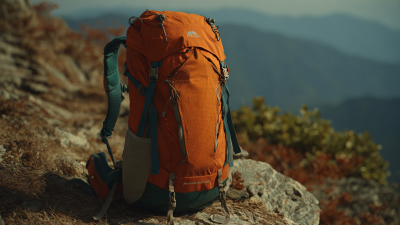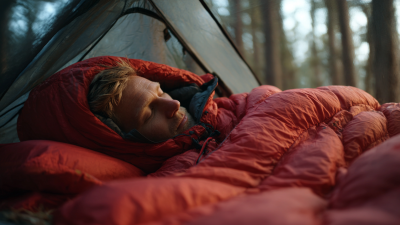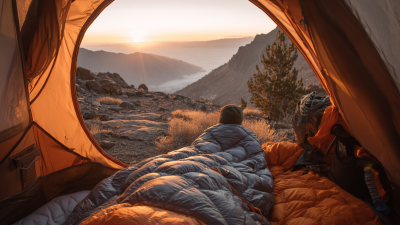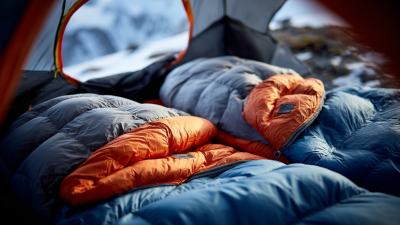Leave Your Message
-
E-mail
-
Whatsapp
As the global outdoor gear market continues to expand, the demand for innovative and efficient equipment like the Ultra Lightweight Sleeping Bag is surging. According to a recent report by ResearchAndMarkets, the global sleeping bag market is projected to reach USD 2.6 billion by 2026, growing at a CAGR of 4.3%. This trend reflects an increasing number of outdoor enthusiasts seeking lightweight solutions for their adventures. At the 2025 China Import and Export Fair, manufacturers are expected to showcase groundbreaking advancements in the design and materials used for Ultra Lightweight Sleeping Bags, focusing on maximizing thermal efficiency while minimizing packed weight. These innovations not only cater to the growing market of hikers and campers but also align with sustainability trends as brands increasingly utilize eco-friendly materials. The fair will undoubtedly serve as a pivotal platform for introducing cutting-edge products that meet the evolving demands of modern outdoor activities.

At the 2025 China Import and Export Fair, the spotlight was on innovative materials revolutionizing the design of ultra lightweight sleeping bags. Exhibitors showcased cutting-edge technologies that emphasize not only weight reduction but also enhanced performance. New synthetic fibers, for instance, have emerged that provide exceptional insulation while being significantly lighter than traditional materials. This advancement not only caters to the needs of outdoor enthusiasts but also aligns with the growing demand for sustainable products.
In addition to synthetic advancements, the integration of advanced coatings and treatments has further improved the durability and water-resistance of these sleeping bags. Manufacturers are increasingly utilizing environmentally-friendly processes that minimize waste and maximize efficiency, ensuring that these innovations are both practical and responsible. These developments signal a shift in the camping and outdoor gear industry, where ultralight gear does not sacrifice comfort and functionality but instead embraces a greener approach. The fair highlighted a future where adventurers can enjoy the great outdoors more comfortably and sustainably than ever before.
The lightweight outdoor gear market is experiencing significant growth as consumers increasingly prioritize convenience and mobility during their adventures. Innovations in ultra lightweight sleeping bags are at the forefront of this trend, offering an array of options designed to enhance the outdoor experience without compromising on comfort. Factors such as improved materials, sustainable practices, and multifunctional designs are influencing consumer preferences, making these products more desirable for camping and trekking enthusiasts alike.
When choosing the right sleeping bag, consider the following tips: First, pay attention to the weight and packability of the bag; a lighter option will make your journey more enjoyable. Next, evaluate the temperature rating to ensure it suits the climate of your adventure. Lastly, check for features like water resistance and insulation types, as these can significantly impact your comfort level when outdoors.
As manufacturers showcase their latest innovations at the 2025 China Import and Export Fair, it's clear that the market is evolving rapidly. With a focus on lightweight, sustainable options, consumers are now more equipped than ever to embrace the great outdoors. Embracing the trend of minimalism in outdoor gear not only enhances portability but also contributes to a more eco-friendly approach to nature exploration.
| Product Type | Weight (g) | Material | Temperature Rating (°C) | Price (USD) | Market Share (%) |
|---|---|---|---|---|---|
| Ultra-Light Sleeping Bag | 600 | Nylon | -5 | 120 | 25 |
| Compact Sleeping Bag | 500 | Down | 0 | 150 | 30 |
| 3-Season Sleeping Bag | 800 | Synthetic | -10 | 100 | 20 |
| Mummy Sleeping Bag | 700 | Ripstop Nylon | -15 | 135 | 25 |
| Lightweight Convertible Bag | 650 | Mixed Blend | -7 | 170 | 25 |
At the 2025 China Import and Export Fair, innovations in ultra-lightweight sleeping bags are set to revolutionize the outdoor gear market with a strong emphasis on sustainability. As eco-friendly practices gain traction worldwide, manufacturers are increasingly focusing on using recycled materials and sustainable production techniques to reduce their environmental footprint. This shift not only appeals to the growing number of environmentally-conscious consumers but also helps combat the challenges of waste and resource scarcity in the textile industry.
Tips for choosing eco-friendly sleeping bags: Look for products made from recycled fabrics, which not only minimize waste but also provide durable performance. Additionally, consider brands that disclose their sustainability practices, ensuring transparency in their manufacturing processes. Finally, seek out certifications that guarantee eco-friendly materials, guiding you toward more responsible purchasing decisions.
As the popularity of camping and outdoor activities continues to rise, the sleeping bag market is projected to grow significantly in the coming years. This growth is driven by an increased demand for sustainable products, with consumers seeking options that align with their values. Supporting brands that prioritize sustainability not only contributes to environmental conservation but also promotes ethical practices within the industry.
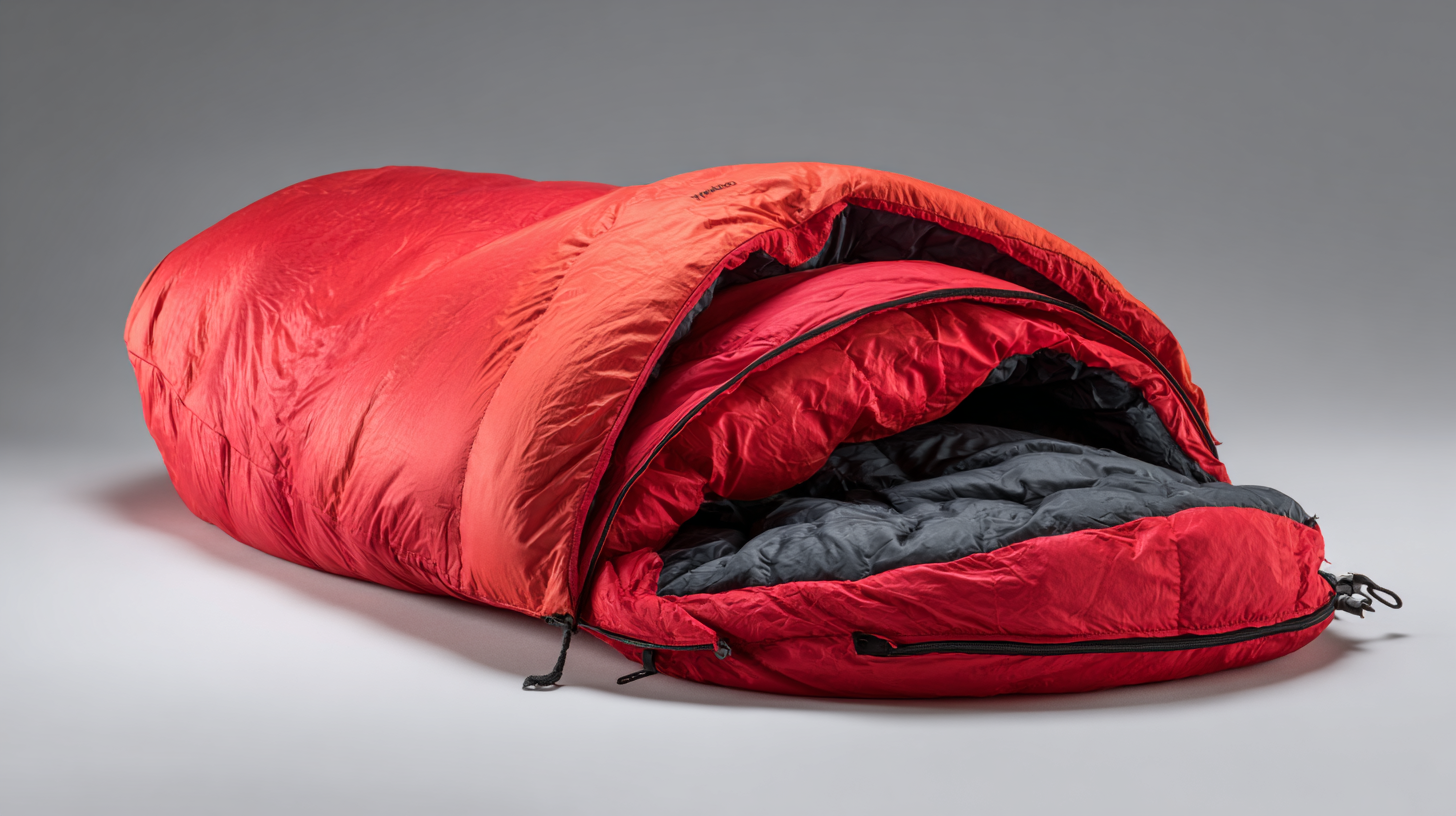
At the 2025 China Import and Export Fair, innovation in ultra-lightweight sleeping bags takes center stage, highlighting various weight reduction techniques employed by leading brands. A recent report by the Outdoor Industry Association indicates that the demand for lightweight camping gear has surged by 37% over the past three years, driven largely by the growing popularity of ultralight backpacking. Manufacturers are now exploring advanced materials such as Dyneema and ultra-light synthetic insulation, which can reduce the weight of sleeping bags by up to 30% without compromising insulation performance.
Brands like Nemo and Sea to Summit have pioneered the use of innovative construction techniques, including welded seams and minimalist designs that further minimize unnecessary weight. According to a study published in the Journal of Outdoor Recreation and Tourism, cutting down on excess weight can enhance the user experience significantly by decreasing fatigue and increasing mobility in the backcountry. The report notes that a one-pound reduction in gear weight can lead to a 20% increase in distance traveled per day by backpackers, illustrating the importance of these advancements in the realm of outdoor exploration.
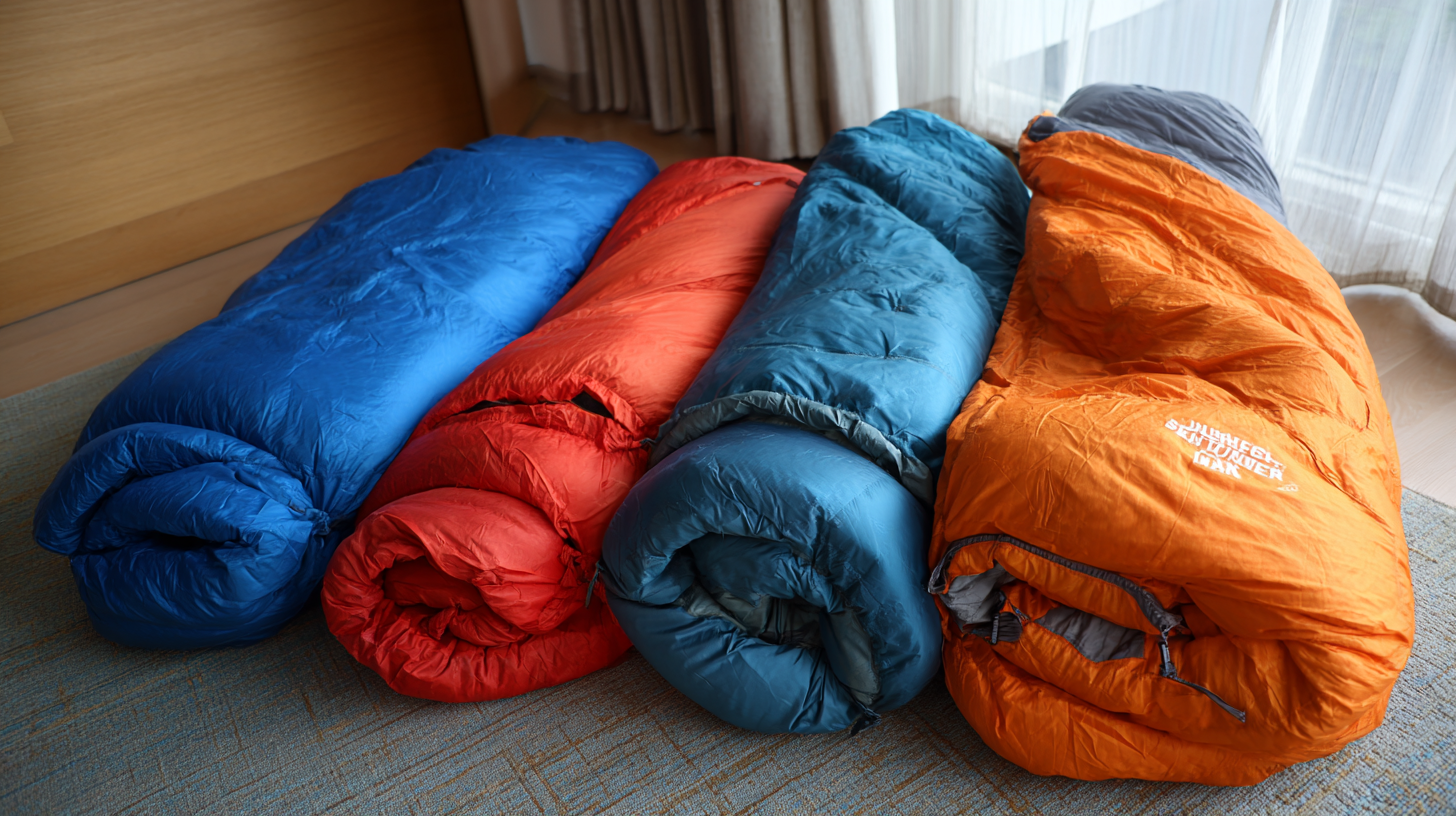
The outdoor gear market is undergoing significant transformation as innovative technologies drive the lightweight and intelligent design of products. As traditional outdoor equipment often suffers from high weight, energy consumption, and lack of intelligence, manufacturers are focusing on integrating materials, scenarios, and smart solutions. The projected growth of the ultraviolet filter market from approximately $333 million in 2023 to $482 million by 2030 highlights a broader trend in consumer demand for efficient, portable gear in outdoor activities.
By 2030, advancements in materials such as magnesium-aluminum alloys and the integration of artificial intelligence can redefine user experiences. This alignment with modern consumer preferences could unlock new market opportunities, particularly in segments like fishing gear, where customization and versatility are essential. The continuous push towards lightweight, high-performance equipment is poised to reshape the future landscape of outdoor gear, catering to an increasingly adventurous and environmentally-conscious consumer base.

